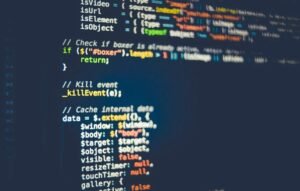Difference Between AI vs. Machine Learning
Artificial Intelligence (AI) and Machine Learning (ML) are two terms that are often used interchangeably, but they are not the same thing. While both technologies are part of the broader field of computer science and have the ability to mimic human intelligence, they differ in their approach and application. In this article, we will explore the key differences between AI and machine learning and understand how they are related.
Key Takeaways:
- AI is a broader concept that involves the simulation of human intelligence in machines, while machine learning is a subset of AI that focuses on training machines to learn from data.
- AI encompasses a wide range of techniques and applications, including natural language processing, expert systems, and computer vision, whereas machine learning specifically deals with algorithms that allow machines to improve their performance on a specific task through experience.
- AI can operate both in a predefined and adaptive manner, whereas machine learning is primarily focused on adaptive learning.
Understanding Artificial Intelligence (AI)
Artificial Intelligence is a field of computer science that involves the development of intelligent machines that can perform tasks that typically require human intelligence. AI encompasses a wide range of techniques, including symbolic logic, expert systems, and neural networks, among others. It aims to create machines that are capable of perceiving, reasoning, and learning from data to make autonomous decisions or perform complex tasks.
*AI has the potential to revolutionize various industries, such as healthcare, finance, and transportation, by automating and optimizing processes, predicting outcomes, and providing personalized recommendations.*
Understanding Machine Learning (ML)
Machine Learning is a subset of AI that focuses on the development of algorithms and statistical models that allow machines to improve their performance on a specific task through experience. ML algorithms are designed to automatically learn and make predictions or decisions without being explicitly programmed. They rely on patterns and inferences derived from large volumes of data to identify trends and make accurate predictions or decisions in the future.
*Machine learning algorithms have the ability to continuously learn and adapt to new data, allowing them to improve their performance over time.*
Comparison between AI and Machine Learning
| Artificial Intelligence (AI) | Machine Learning (ML) | |
|---|---|---|
| Definition | Field of computer science that aims to create intelligent machines capable of human-like tasks. | Subset of AI that focuses on the development of algorithms that enable machines to learn and improve from data. |
| Approach | Wide range of techniques and methods, including symbolic logic, expert systems, and neural networks. | Statistical modeling and algorithms that allow machines to improve their performance through experience. |
| Scope | Encompasses various applications, including natural language processing, computer vision, and expert systems. | Primarily focuses on algorithms that enable machines to learn from data and make predictions or decisions. |
Applications of AI and Machine Learning
Both AI and machine learning have a wide range of applications across industries. AI technologies, such as natural language processing (NLP) and computer vision, are used in virtual assistants, image recognition systems, and autonomous vehicles, among others. On the other hand, machine learning is applied in areas such as fraud detection, recommendation systems, and predictive analytics.
*AI and machine learning are transforming industries by enabling automation, improving decision-making, and driving innovation.*
Conclusion
In summary, while AI and machine learning are related, they are distinct concepts within the field of computer science. AI is a broader concept that involves the simulation of human intelligence in machines, while machine learning is a subset of AI that focuses on training machines to learn from data. Both technologies have the potential to revolutionize industries and drive innovation, making them essential components of the future of computing.

Common Misconceptions
Misconception 1: AI and Machine Learning are the same thing
One common misconception is that AI and Machine Learning are interchangeable terms and refer to the same concept. In reality, AI is a broader field that encompasses machine learning as just one subset. AI refers to the development and implementation of systems and machines that can perform tasks that typically require human intelligence. On the other hand, Machine Learning is a specific approach within the field of AI that focuses on enabling machines to learn from data and improve their performance over time.
- AI includes various techniques such as natural language processing, robotics, and expert systems.
- Machine Learning uses algorithms to enable machines to learn patterns and make predictions based on data.
- AI can exist without Machine Learning, but Machine Learning cannot exist without AI.
Misconception 2: AI and Machine Learning are only relevant to advanced technology
Another misconception is that AI and Machine Learning are only applicable to futuristic and highly advanced technology. In reality, AI and Machine Learning have already found their way into our daily lives and are being used in various industries and applications. From personalized recommendations on streaming platforms to voice assistants on smartphones, AI and Machine Learning are already impacting how we interact with technology.
- AI and Machine Learning are used in healthcare to improve diagnostics and develop personalized treatment plans.
- Smart home devices, such as thermostats and security systems, often utilize AI and Machine Learning algorithms.
- AI-powered chatbots and virtual assistants are becoming increasingly common in customer support services.
Misconception 3: AI and Machine Learning will replace human jobs entirely
One common fear surrounding AI and Machine Learning is that they will lead to widespread unemployment as machines take over human jobs. While it is true that some repetitive or routine tasks may be automated, AI and Machine Learning are more likely to augment human capabilities rather than replace them entirely. These technologies are designed to assist and enhance human decision-making, productivity, and efficiency.
- AI and Machine Learning can automate repetitive tasks, allowing humans to focus on more complex and creative tasks.
- AI can provide valuable insights and recommendations, but human judgment and expertise are still essential for critical decision-making.
- New job roles are being created to maintain, develop, and improve AI and Machine Learning systems.
Misconception 4: AI and Machine Learning are infallible and unbiased
There is a misconception that AI and Machine Learning systems are infallible and completely unbiased. However, these systems are only as good as the data they are trained on and the algorithms they use. Bias can inadvertently be introduced during the training process, leading to discriminatory outcomes. It is essential to understand that AI and Machine Learning systems are not inherently perfect or neutral and can reflect the biases present in the data used to train them.
- Data bias, such as underrepresentation or minority groups, can lead to biased predictions and decisions.
- Machine Learning algorithms can perpetuate existing societal inequalities if not carefully designed and monitored.
- Ongoing research and efforts are being made to develop fair and unbiased AI and Machine Learning systems.
Misconception 5: AI and Machine Learning are a threat to humanity
There is often a misconception fueled by popular media and science fiction that AI and Machine Learning pose an existential threat to humanity. While it is crucial to be mindful and cautious about the ethical implications and potential risks associated with these technologies, the idea of a malevolent AI taking over the world is largely exaggerated. The development and implementation of AI and Machine Learning systems require human guidance and control to ensure safe and responsible use.
- AI and Machine Learning systems are programmed by humans and cannot act independently beyond their designated scope.
- Strict regulations and ethical frameworks are in place to govern the development and deployment of AI and Machine Learning technologies.
- The focus of AI and Machine Learning research is on creating beneficial and ethical systems that align with human values.

Difference in Definitions
In this table, we compare the definitions of Artificial Intelligence and Machine Learning. It is important to understand the distinction between the two terms as they are often used interchangeably, but represent different concepts and approaches.
| Artificial Intelligence | Machine Learning |
|---|---|
| A branch of computer science that aims to create intelligent machines capable of mimicking human behavior and performing tasks that would require human intelligence. | A subset of AI that focuses on designing algorithms capable of learning from and making predictions or taking actions based on patterns and data, without being explicitly programmed. |
Application Examples
In this table, we provide some real-world examples of how Artificial Intelligence and Machine Learning are used in different industries and domains. This illustrates the practical applications and impact of each technology.
| Artificial Intelligence | Machine Learning |
|---|---|
| Autonomous vehicles | Recommendation systems |
| Voice assistants (e.g., Siri, Alexa) | Image recognition |
| Chatbots | Fraud detection |
| Virtual personal assistants | Natural language processing |
Data Requirements
This table outlines the data requirements of Artificial Intelligence and Machine Learning. Understanding the diversity and amount of data needed for each approach is crucial, as it influences the complexity and accuracy of the models developed.
| Artificial Intelligence | Machine Learning |
|---|---|
| Requires structured and unstructured data, often requiring large datasets to train models effectively. | Relies on labeled training datasets to recognize patterns and make predictions. Quality and quantity of data can significantly impact the model’s performance. |
Training Methods
Here, we compare the training methods used in Artificial Intelligence and Machine Learning. The training phase is crucial for both approaches, as it enables the models to learn from the provided data and improve their performance over time.
| Artificial Intelligence | Machine Learning |
|---|---|
| Rules-based programming and expert systems | Supervised learning, unsupervised learning, reinforcement learning |
Human Intervention
This table highlights the role of human intervention in Artificial Intelligence and Machine Learning. Understanding the level of human involvement provides insights into the autonomy and decision-making capabilities of each approach.
| Artificial Intelligence | Machine Learning |
|---|---|
| Requires explicit programming and predefined rules set by human developers. | Can make predictions or take actions without explicit programming, based on pattern recognition and learned behaviors. |
Scalability
In this table, we compare the scalability of Artificial Intelligence and Machine Learning. Scalability is crucial when it comes to implementing these technologies effectively and efficiently in various use cases.
| Artificial Intelligence | Machine Learning |
|---|---|
| Can be complex and resource-intensive to scale due to the need for programming and rule-based systems. | Scalable, as models can be trained on large datasets and applied to diverse problem domains with minimal modifications. |
Expertise Required
Here, we outline the expertise needed for Artificial Intelligence and Machine Learning projects. Understanding the skill sets required for each approach can help organizations identify the necessary resources for successful implementation.
| Artificial Intelligence | Machine Learning |
|---|---|
| Domain knowledge, expertise in coding and algorithms, understanding of ethics and responsible AI guidelines. | Data scientists, knowledge of statistical modeling, programming skills, ability to analyze and interpret datasets. |
Ethical Considerations
Though providing the potential for great advancements, both Artificial Intelligence and Machine Learning present ethical considerations. This table highlights some important ethical factors to consider when implementing AI-based systems.
| Artificial Intelligence | Machine Learning |
|---|---|
| Privacy concerns and data security risks due to massive data collection. | Biased outcomes if training datasets are not diverse or representative of the target population. |
| Job displacement and impact on employment in certain industries. | Transparency and interpretability of black-box models. |
Future Potential
This table explores the future potential of Artificial Intelligence and Machine Learning. It demonstrates the current and anticipated impact of these technologies on various industries and societal aspects.
| Artificial Intelligence | Machine Learning |
|---|---|
| Advancements in robotics, autonomous systems, and personalized healthcare. | Improved natural language understanding and AI-driven decision-making across industries. |
Conclusion
The distinction between Artificial Intelligence and Machine Learning is crucial in understanding the capabilities and limitations of each technology. While Artificial Intelligence represents a broader concept aiming to create intelligent systems, Machine Learning focuses specifically on algorithms that can learn from data. Each approach has its own applications, data requirements, training methods, and ethical considerations. However, both have immense potential to transform industries, enhance decision-making processes, and shape society. As these technologies continue to evolve and mature, it is essential to navigate the ethical challenges and ensure responsible AI development for a better future.
Frequently Asked Questions
Difference Between AI vs. Machine Learning
What is Artificial Intelligence (AI)?
to think, learn, and perform tasks similar to humans. It involves machines or systems that can exhibit
characteristics such as problem-solving, logical reasoning, speech recognition, decision-making, and
learning from experience.
What is Machine Learning (ML)?
experience without being explicitly programmed. It involves algorithms and statistical models that allow
computers to analyze and interpret data and make predictions or decisions based on patterns and
observations.
How do AI and ML relate to each other?
learn and improve their performance over time. While AI encompasses a broader range of concepts, ML is the
practical implementation of AI techniques to make machines learn and adapt.
What are the main differences between AI and ML?
focuses on creating machines that can mimic human intelligence, whereas ML is a specific approach to achieving
AI by training machines to learn from data. AI can include both ML and non-ML techniques while ML is a subset
of AI that relies on statistical models and algorithms to learn from data.
How does AI make decisions?
rules or algorithms. They can learn patterns from existing data and apply them to new situations or use
reinforcement learning techniques to improve their decision-making over time. AI systems can also incorporate
human input or expert knowledge to enhance their decision-making capabilities.
What are the applications of AI and ML?
virtual assistants, recommendation systems, image and speech recognition, autonomous vehicles, fraud
detection, and personalized marketing. ML is used in areas such as predictive analytics, natural language
processing, medical diagnosis, autonomous robotics, and financial modeling, among others.
Do AI or ML have any limitations?
limitations in data can impact their performance. They also require significant computational resources and
energy consumption. Bias and ethical concerns are other challenges, as AI systems can inadvertently amplify
existing biases present in the data they are trained on. Additionally, the interpretability of AI and ML
models can pose challenges in critical domains where transparency is crucial.
Can AI and ML replace human jobs?
replace certain jobs, they also create new opportunities and roles. AI and ML technologies are more effective
as augmenting tools, working alongside humans to improve efficiency, problem-solving, decision-making, and
innovating new solutions. The impact on jobs depends on how organizations adopt and integrate these
technologies.
Are AI and ML the same as human intelligence?
specific tasks at a high level of proficiency, they lack the general-purpose cognitive abilities, deep
understanding, intuition, and consciousness that humans possess. AI and ML systems are designed to emulate
certain aspects of human intelligence, but they differ in their underlying mechanisms and limitations.
How fast is AI and ML developing?
algorithmic techniques have accelerated their development and applications. The field continues to make
breakthroughs in various domains, such as natural language processing, computer vision, robotics, and
healthcare. Ongoing research and investments from academia and industry contribute to the continuous growth
and innovation in AI and ML.




